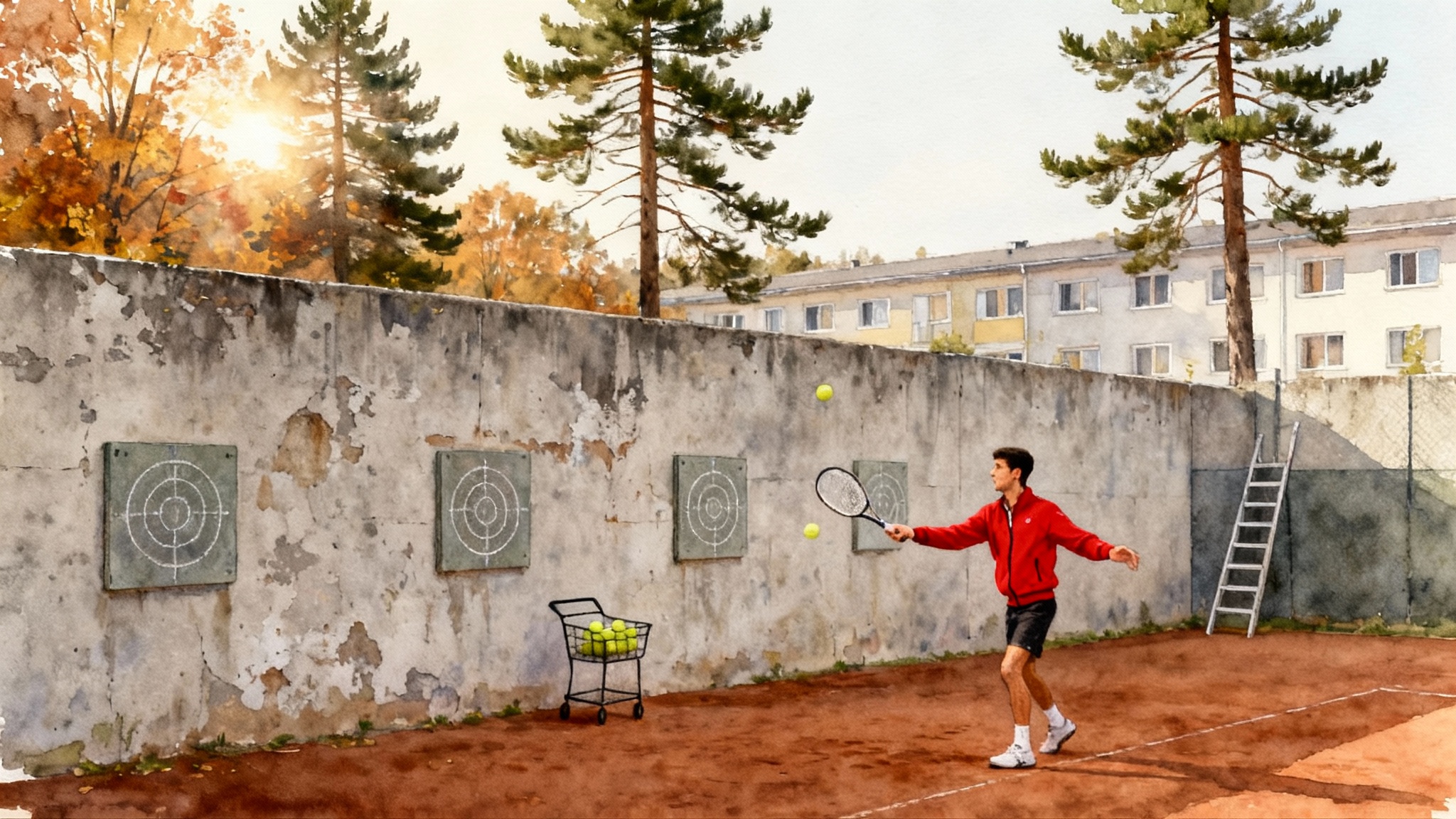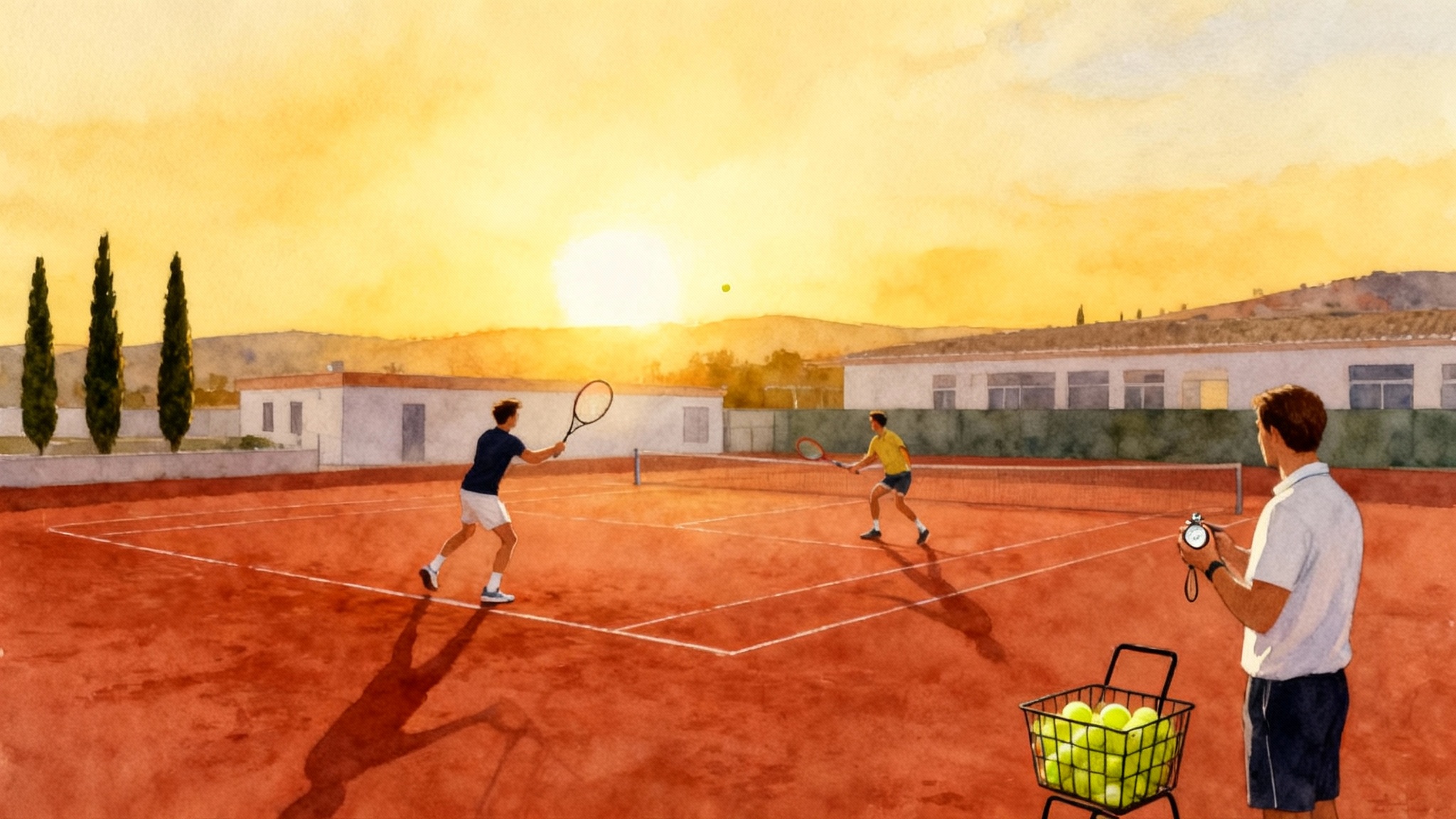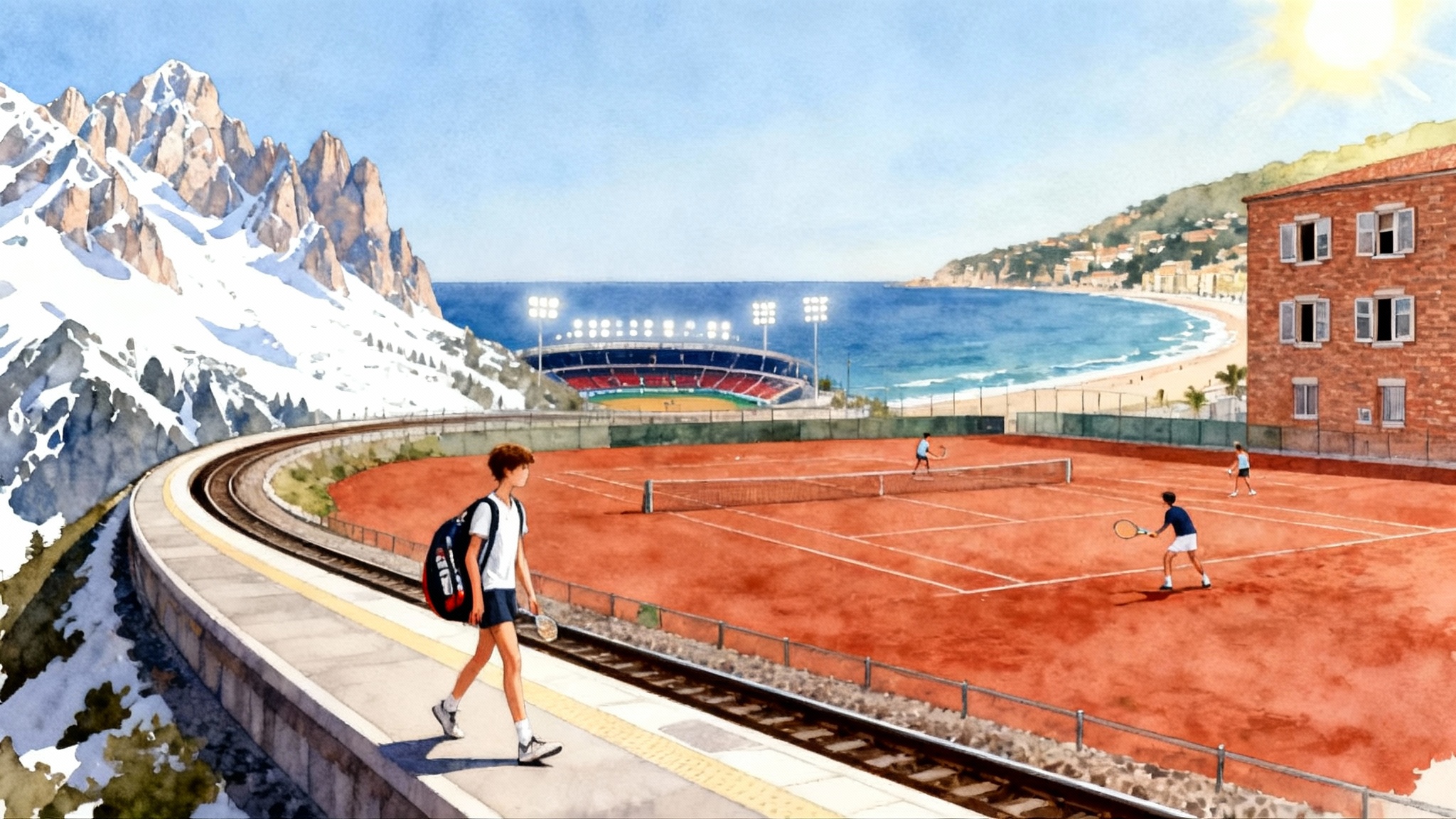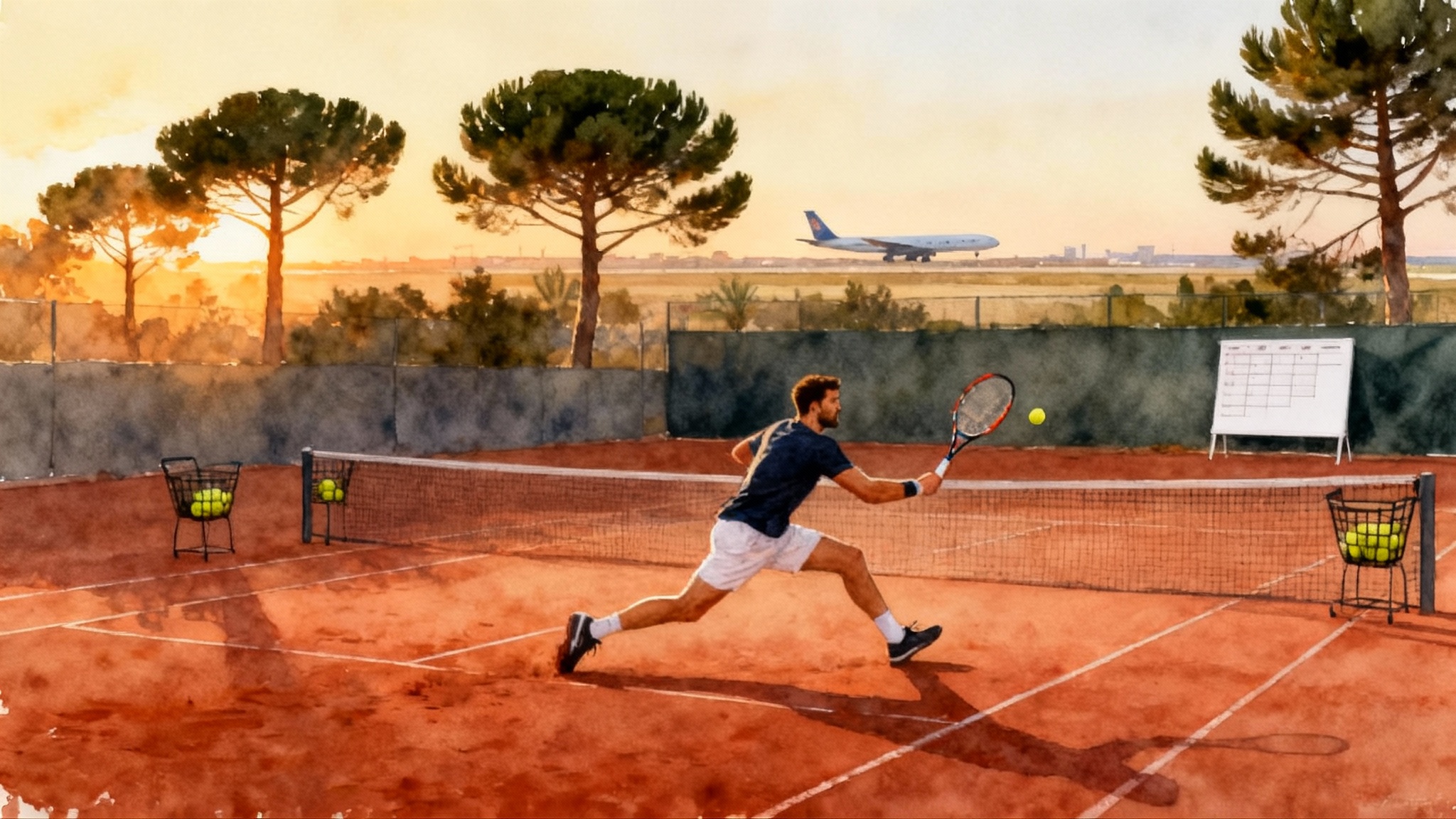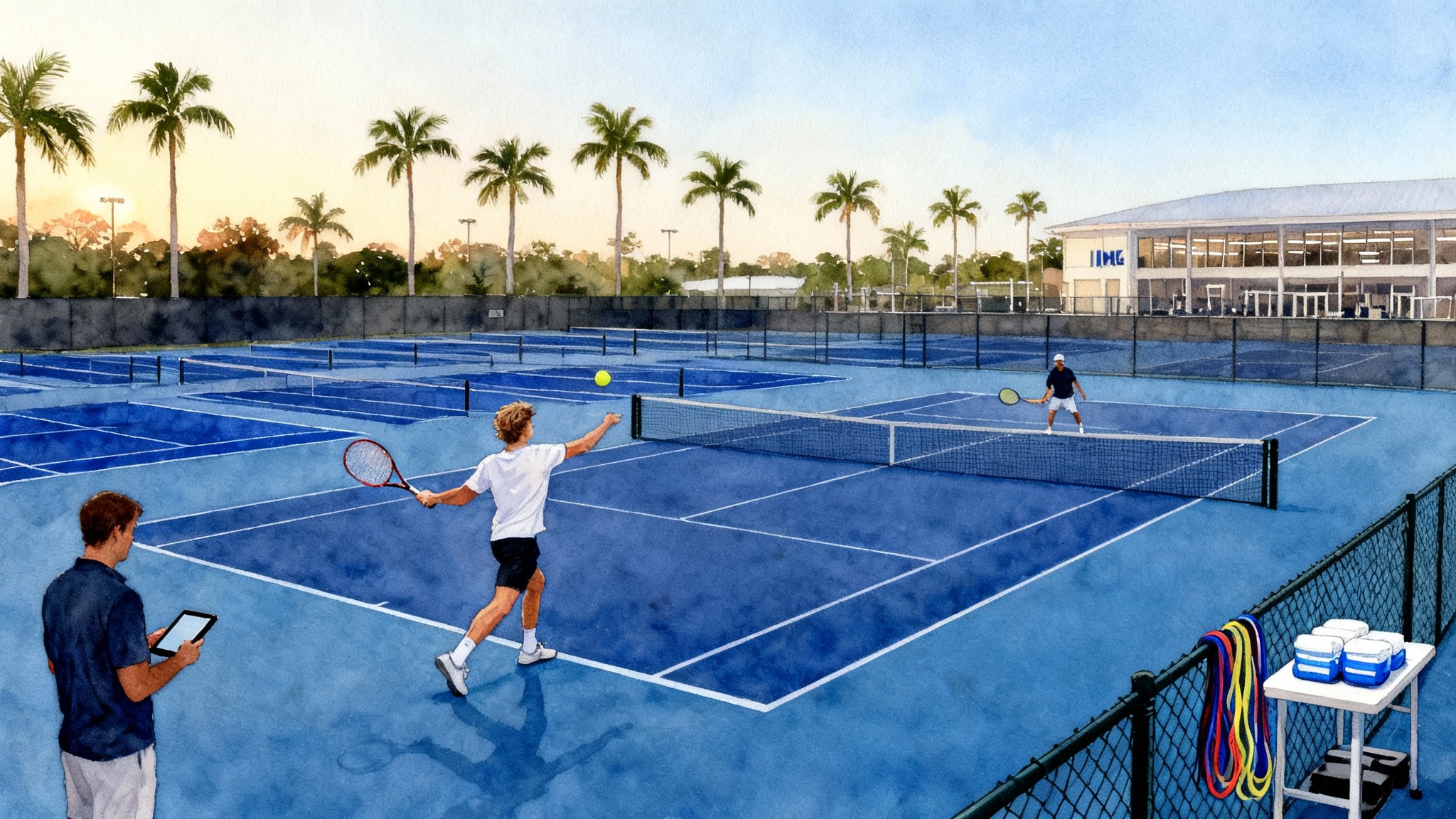From JTCC to Center Court: Frances Tiafoe’s Path to the ATP Tour
Frances Tiafoe’s rise from Maryland’s Junior Tennis Champions Center shows how a public access, coach driven academy can develop a pro. We break down the JTCC model and give families a practical checklist to follow.
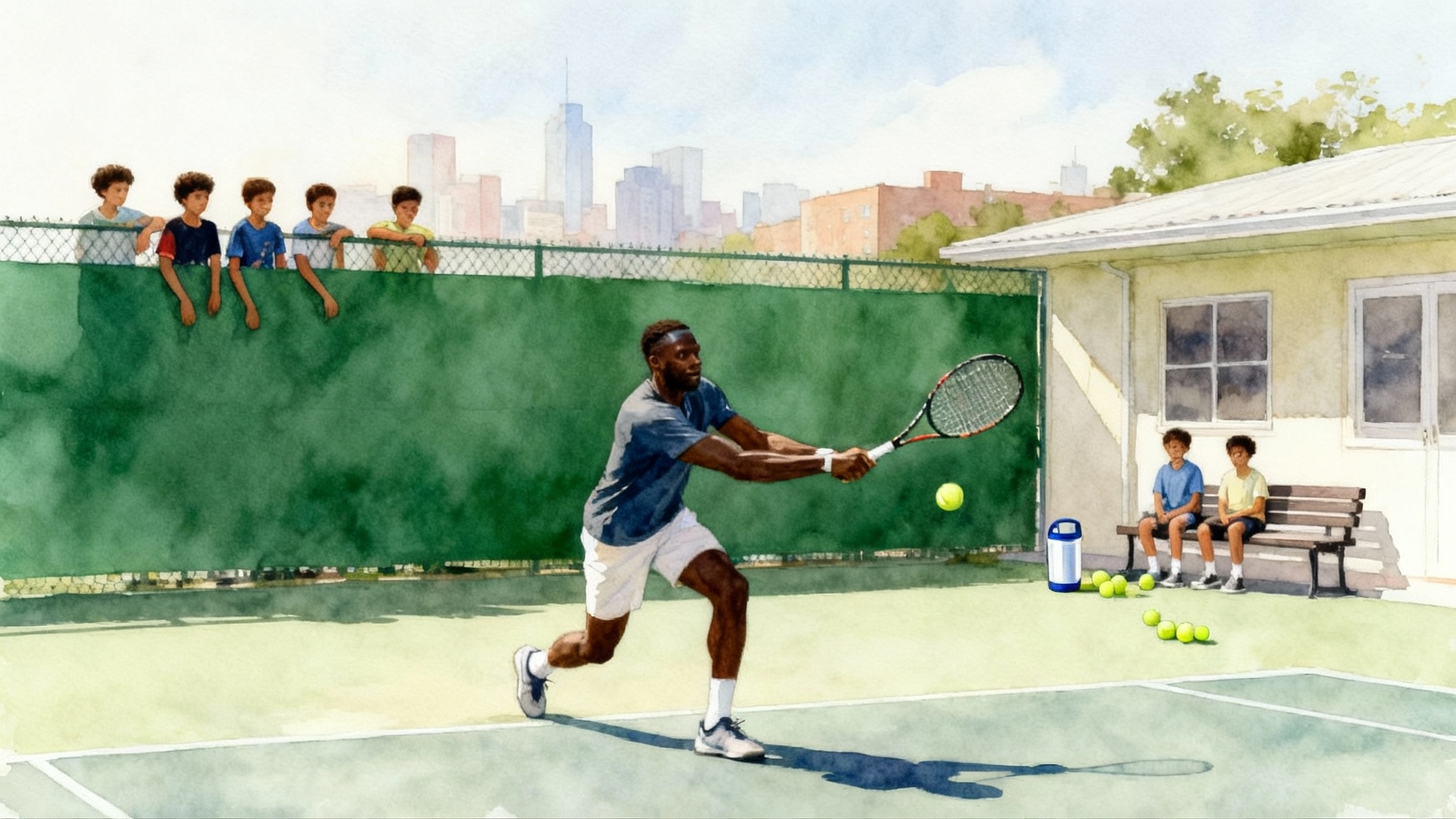
A community center that built a pro
Frances Tiafoe did not take the usual route of private boarding academies or cross country relocations. His path ran through a public access training hub in College Park, Maryland, where he spent long days around courts, coaches, and kids who treated tennis like a community sport. The Junior Tennis Champions Center, known locally as JTCC, is a nonprofit that sets development first and glamour last. Its mission is clear on the JTCC mission and programs, and it runs like a neighborhood hub that happens to produce world class competitors.
Tiafoe’s story begins with proximity and repetition. Because his father worked at the facility, he was around the game constantly. That proximity turned into play, then into a training routine, then into a competitive plan. The lesson is not that proximity alone creates champions. The lesson is that a community center can compress the distance between curiosity and craft if the structure is tight and the coaching is intentional.
What the JTCC model actually looks like
JTCC is not a magic building. It is a repeatable model that many clubs can emulate with discipline and care. Families who want results without boarding can learn from four pillars that show up again and again in the program. Programs like the Amy Yee Tennis Center Tennis Academy show how a city facility can run similar structures.
1) Year round structure that still respects seasons
JTCC plans the year in long blocks. Think of it as two school year semesters with short maintenance bridges and a summer tournament season.
- Weekly cadence: four to five on court sessions with a heavy mix of live ball, patterns, and situational points, plus two to three athletic development sessions. The strength plan is age staged. For younger players, movement literacy and coordination matter more than weight. For older juniors, strength and elastic power join the menu.
- Seasonal emphasis: during school terms, the focus tilts toward skill consolidation and competitive match play on weekends. In the summer, the volume of tournaments rises. The calendar is not random. It is built backward from goals and school commitments, then adjusted for training blocks, deload weeks, and travel realities.
- Micro feedback loops: coaches meet with families at defined intervals. Video clips and simple performance notes keep everyone aligned. One change at a time is the rule, which prevents the coaching carousel effect that confuses juniors.
This structure sounds simple because it is. The sophistication is in the discipline to hold the line when distractions arrive.
2) Mentorship stacked on coaching
Many academies assign a primary coach and stop there. JTCC pairs primary coaches with mentors who are a step ahead in the pathway. Younger players hit with older juniors. Older juniors practice sets with college players or early stage pros. Each tier models the next set of habits.
- Mentor roles are defined: the older player is not there to feed balls and be nice. They are there to model preparation, to show how to build a point, and to speak in specifics after a set. The talk is concrete. For example: “On deuce points your first ball landed short” or “Your crosscourt forehand has air but not depth.”
- Coaches protect the relationship: feedback flows through the primary coach, who translates advice into one priority for the next session. The mentor experience becomes a learning loop rather than casual time with the star.
Mentorship shrinks the unknown. When a fourteen year old sees a college player unpack a match plan, the road ahead looks less like myth and more like process.
3) Tournament planning that meets the athlete where they are
At JTCC, the schedule is a skill. Juniors begin with local events that create lots of repetitions with little travel. When a player consistently wins at a level, the staff moves them up a tier. The jump is earned and explained.
- Tiers of competition: local age group events, then sectional championships, then national level events. Only when a player’s game and maturity warrant the step do they mix in international junior events and, eventually, professional qualifiers.
- Load management: the club spaces events so that training blocks do not become a blur of “taper, play, recover” with no time to improve. A three week block might include one event and two training weekends built around match simulations.
- Film and data: after important tournaments, coaches gather two or three key clips and a small set of performance notes. Metrics can be as basic as first serve percentage, forehand depth targets, and break point conversion. What matters is consistency of tracking.
Tournament planning becomes a story with chapters, not a scrapbook of random entries.
4) Access, not luxury
The building is a community hub. Courts are busy. Younger kids watch older players grind through fitness. Most families drive in rather than board on site. Scholarships and outreach programs widen the talent pool. None of these elements are glamorous. They are effective. The visible culture is that work is shared and results are earned.
The pivot from strong junior to emerging pro
A lot of juniors win. Far fewer cross the bridge from junior success to professional resilience. Tiafoe’s path highlights three pivotal choices that families and coaches can adopt.
Embrace an athletic identity
Tiafoe is a shotmaker, but the core of his game is athletic identity. Movement, first step, and range set the ceiling for his shot selection. JTCC coaches leaned into that strength rather than sand it down. Drills that start from neutral or defensive positions were a staple, especially live ball patterns that reward scrambling into offense.
Action for families: orient training toward what makes your player dangerous. If speed is their gift, build patterns that end with a forehand on the run. If anticipation is their gift, build return games that trap second serves in the ad corner. Identity comes first, then mechanics support it.
Targeted coaching adjustments instead of overhauls
During the late junior years, the staff narrowed changes to a small set of match driven adjustments. For a player like Tiafoe, two examples stand out.
- Serve patterns: practice sessions emphasized first ball location variety and a reliable slider that opens space. The goal was not a perfect motion. The goal was a serve that creates a predictable first strike.
- Backhand decision tree: the focus shifted from grooving the stroke to making smarter choices about when to change down the line, when to counter crosscourt, and when to use height and spin to reset.
Action for families: make a written list of three match outcomes you want to affect, then trace backward to one technical cue per outcome. Review weekly. If the change is not showing up in match film, it is not yet a change.
Gradual integration with national training
As results improved, Tiafoe participated in select weeks with national programs to sharpen skills and test his level against a wider field. The key word is gradual. Home base remained home. National camps and training weeks were supplements, not replacements. That balance kept continuity with his primary coach while giving him access to higher speed sessions and better scouting.
Action for families: treat national training opportunities as focused intensives. Arrive with two priorities. Leave with two habits to bring back. If the week creates a new cue that works, commit to it for a block at home before chasing the next tweak.
Why this approach travels well to other clubs
Not every city houses a nationally known nonprofit academy. Yet the JTCC blueprint scales. Here is why.
- It uses time as the lever. Year round structure is a planning exercise, not a budget line.
- It promotes local mentorship. Every area has high school state champions, college players on break, or local pros who can model habits for younger kids.
- It treats tournaments as curriculum. That turns travel decisions into development decisions.
- It keeps the home coach central. Outside camps are inputs, not new operating systems.
For a contrast with private academy playbooks, compare how JC Ferrero Equelite forged Alcaraz and how the Pilic Academy forged Djokovic. The common thread is a clear plan that families can execute.
A family checklist to replicate the pathway without boarding
Here is a concrete plan you can print, bring to your coach, and start using this month.
- Choose a home base within 30 minutes
- Criteria: at least six courts, a coach who welcomes match film, and a pod of players within two years of your child’s age. Ask for a trial week.
- Appoint a primary coach and a mentor
- The primary coach sets the plan. The mentor is a college player or advanced junior who hits once a week and reviews one match per month. Pay them fairly or barter with stringing or clinic help.
- Build a 46 week map
- Two 18 week semesters plus ten summer weeks. Mark six deload weeks for family time and recovery. Post the calendar on the fridge and inside your player’s bag.
- Run a simple training split
- Three to four tennis sessions plus two athletic sessions per week during the school term. In summer, add one more hit and one more recovery day. Keep one full day off every week.
- Track three numbers only
- First serve percentage, forehand depth beyond the service line, break point conversion. Update after each event in a shared note.
- Simulate pressure weekly
- Play one practice set every week that starts at 3 3 with no ad scoring. The winner must serve out the set. Record it twice a month and review three points, not thirty.
- Upgrade the serve without fancy gear
- On a public court, chalk three target boxes. For ten minutes, hit to one box only. Then switch boxes every serve. Make a game out of location, not speed.
- Use local events aggressively
- For three months, play two local events and skip long travel. Spend the money you saved on four extra hitting sessions and a good pair of shoes.
- Add sparring partners creatively
- Invite a strong player from a neighboring club for a Saturday set. Offer to host next time. Build a rotation of three sparring partners by the end of the semester.
- Treat national camps as intensives
- Before a camp, write two specific questions. For example: How should I attack ad side second serves? Which return position fits my grip and height? After the camp, apply only two new habits for six weeks.
- Plan one pro event visit per year
- Attend a day session at a professional tournament. Watch one full practice and one full match from the same player. Read the Frances Tiafoe ATP profile to see how patterns at the top echo the habits you are building.
- Build a travel template
- Pack two strings per match, snacks your player actually eats, and a small notebook with the three metrics you track. Habit beats novelty on the road.
- Decide the college and pro conversation early
- At age fifteen to sixteen, sketch both paths. On the pro path, map a year of prize money events and qualifiers with realistic costs. On the college path, list programs that match academic interests and playing style. The decision is not forever, but it is easier when you plan both.
- Make fitness simple and daily
- Ten minute mobility blocks before bed. Short hill sprints once a week. A jump rope and a medicine ball can cover a lot of ground without a gym membership.
- Protect joy
- One hit per week with no drills. Play games, singles tiebreakers, or mixed doubles with friends. Joy fuels consistency.
What coaches can borrow on Monday morning
- Set one shared metric sheet for your group. Post it in the office and review every two weeks with each player. Numbers focus the conversation and reduce opinion battles.
- Formalize mentorship. Put a schedule on paper between your top juniors and your younger group. Give mentors a one page guide on how to give tactical feedback.
- Build a match play ladder that crosses ages. Reward competitive courage. A twelve year old who sets up points well against a fifteen year old deserves public praise.
- Plan your calendar backward. Place the biggest event first. Then set training blocks that build toward it. Leave recovery weekends on purpose.
The deeper lesson of Tiafoe’s rise
Tiafoe made his name on the sport’s biggest stages, yet the lessons in his development are small and repeatable. He grew inside a structure that never confused gear with progress or travel with growth. He learned from coaches who made one change at a time and from mentors who showed the next level without making it mysterious. He traveled a calendar that met him where he was and pushed him only when he was ready.
Families who want to copy that path do not need to move or spend like a tour sponsor. They need to choose a home base, appoint a coach and a mentor, and build a year they can stick to. Then they need to protect the two resources that matter most in player development. Minutes on court and belief that a clear plan works.
Tiafoe’s journey from a community center to packed stadiums proves that a well run public access program can be a launchpad to the professional game. If you keep the structure tight and the feedback honest, the path from your local courts to center court is longer than it looks, but very real.


